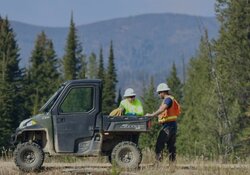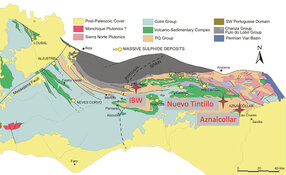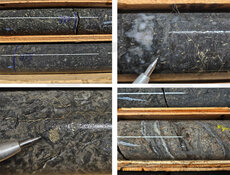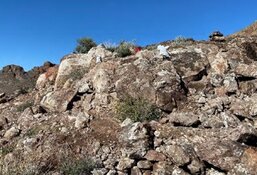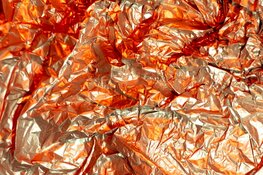The Critical Metals Report: Investors need to identify profitable projects in this space. What does it take to produce rare earth elements (REEs) at a healthy profit?
Alex Knox: Above all, a project needs a combination of high grades and high-value REEs, such as heavy rare earths (HREEs). High value-per-ton ore keeps a project cost competitive. As the market fluctuates and REEs go up and down in price, the low-cost producers will keep operating when rival companies may have trouble staying afloat.
Secondly, a low-cost method of extraction is important. If the REEs require a lot of chemicals or complicated processing, it just adds cost—not value.
The third ingredient is metallurgy, which has to be evaluated for each and every deposit. This requires skilled staff, both in exploration and in metallurgy, to find deposits and develop processes to extract them at the lowest possible price. Investors should ask questions: What is the technical team's expertise in REEs? Does the company have an REE advisory board?
Those are the three things that I would prioritize, in that order, for investors evaluating an REE company or project.
TCMR: Another cost dimension is environmental impact. A recent report from Jacob Securities put a $10 billion price tag on remediating damage to ionic clay deposits in southern China, which were heavily mined for REEs. Is it possible to develop REE deposits in an environmentally responsible manner?
AK: Of course. REEs are part of the green revolution. It's not only possible to develop deposits in an environmentally responsible way, it's the path that industry is taking.
TCMR: China's ionic clay deposits yield REEs at a remarkably low cost, which is how China became the world's source for REEs. Why is it so cheap to mine REEs from these deposits?
AK: First, they're mined by open-pit methods. Second, they're not very deep, so operators don't have to excavate at great depths. Third, they don't require blasting. They're just a pile of weathered clays. Fourth and most importantly, the REEs contained in the clays are easily removed from the clays and taken into solution, so the cost of metallurgical recovery is extremely low.
TCMR: Judging by the feasibility, prefeasibility and preliminary economic assessments (PEAs) conducted on North American REE deposits, could any of the projects even approach the low costs that China's mining industry thrived off of?
AK: If China's government is successful in tightening regulations on its REE mining, then production costs there are going to go up. And there are North American projects on the horizon that can extract REEs even more cheaply than the ionic clay-based projects in China.
For example, Orbite Aluminae Inc. (ORT:TSX) is developing an alumina mine and extraction plant in the Gaspé Peninsula of Quebec. About a year ago, it discovered that its alumina deposit, which is nearing production, contains substantial byproduct quantities of REEs that were naturally extracted by the simple process that Orbite uses to extract the aluminum. Because Orbite's REEs are extracted in a form that allows them to be purified and separated extremely easily and because these REEs are a byproduct credit, Orbite's process adds virtually no costs and will be extremely competitive.
I helped Orbite make its PEA NI 43-101 compliant. Orbite has already produced 99.9% pure separated REEs, plus scandium and gallium. It will be able to recover all of the purified REEs from this deposit. Orbite's technology is impressive because in many other REE deposits, the extractive metallurgy consumes hundreds of kilograms of acid per ton of ore in order to break down the REE minerals into a form where they can be extracted. All of the acid used in Orbite's process is regenerated and recycled. It's called low-energy acid regeneration processing, and it's patented. So Orbite can license this technology to other companies with REE deposits.
TCMR: Would this technology work on other deposits? Could it be taken and used on, say, Avalon Rare Metals Inc.'s (AVL:TSX; AVL:NYSE; AVARF:OTCQX) Nechalacho project or Quest Rare Minerals Ltd.'s (QRM:TSX; QRM:NYSE.A) Strange Lake deposit?
AK: The present metallurgical recoveries for all of these deposits—Avalon, Quest, Matamec Explorations Inc. (MAT:TSX.V; MRHEF:OTCQX), Tasman Metals Ltd. (TSM:TSX.V; TAS:NYSE.A; TASXF:OTCPK; T61:FSE) and many others—involve dissolving the minerals in acid. Orbite was in negotiations with Canadian REE producers to potentially license its technology for use in the metallurgical recovery of REEs and other elements. In addition, Tasman, Matamec, Quest and Avalon all have significant quantities of zirconium, which is extracted as a byproduct. So not only could this process extract REEs from these deposits at a zero acid consumption, which is just amazing, but it could free up the value of these byproducts.
TCMR: If these other companies were to employ Orbite's process, would they dramatically reduce their capital expenditure costs?
AK: Yes, and their operational expenditures. One of the wonderful things about this process is it can potentially recover everything. You put a rock in and nothing comes out the other end but products. So there are no tailings at all. Or by modifying the process, you could potentially take the REE- and byproduct-bearing phases into solution preferentially and leave behind the gangue minerals.
TCMR: Does Orbite have the mining permits it needs for full-scale commercial production?
AK: Permits are underway. Orbite is going to produce about 1,200 tons per year REEs from each of these plants. It said that it needs about 10 plants to supply 50% of the Quebec alumina market. It could be producing quite a sizable amount of REEs.
TCMR: Is this the biggest development in this space to date?
AK: From a technology standpoint, yes. If it works, and there is every indication it's going to work, this could be the biggest development in the REE space since the South China clays.
TCMR: What other REE companies have you consulted with?
AK: Commerce Resources Corp.'s (CCE:TSX.V; D7H:FSE; CMRZF:OTCQX) Eldor light rare earth (LREE) deposit in Northern Quebec is rather heavily enriched for an LREE deposit. Not only that, but the geologic body that it is in contains substantial quantities of high-grade tantalum and niobium as well. This one may be more than just an REE deposit.
TCMR: The PEA is modeling a 4,000 ton-per-day open-pit operation that would last about 25 years. Would it be better to increase the tonnage and reduce the mine life, or do you like those numbers?
AK: With Indicated and Inferred resources, the company has 300 million tons or more. Given its enormous resource space, the company could increase the throughput without decreasing the mine life. I haven't looked at its PEA in detail, but I suspect that it's chosen a production rate that would fit with its idea of the market.
Regarding other projects, I had the honor of being part of a team that discovered Matamec's Kipawa deposit in 1988 while working for Unocal Canada Ltd. It's not that high grade, but it's going to be cheaper than expected to mine. It's rather coarse grained, which would help with its metallurgy. And because it's in southern Canada, it has a leg up on the others in terms of logistics.
Tasman's Norra Karr deposit in Sweden is very similar to Kipawa in terms of its mineralogy and grain size. It has the same attractive distribution and ratio of HREEs that Matamec's Kipawa and Quest's Strange Lake deposits have.
There is another very intriguing exploration-stage property owned by Namibia Rare Earths Inc. (NRE:TSX). Its drilling campaign last year yielded a percentage of HREEs over 90%. These are astounding numbers. Its REE distribution and grades make it a project that stands out from all of the others. If a project with such a favorable REE distribution can develop significant tonnage, it could probably be put into production in a relatively short period.
TCMR: In summary, what should investors keep in mind about REE projects?
AK: REE deposits can be an elemental treasure trove. There are all sorts of other things that can accumulate in the same area as REEs: niobium, tantalum, fluorine, zirconium, hafnium and beryllium. I think much of the value could come from extracting these byproducts. Investors should pay attention to potentially viable byproducts. Above all, be wary of the many REE companies out there with lots of enthusiasm but little or no expertise.
Geologist Alex Knox has been involved in the mineral exploration industry since 1970. He served in the mineral exploration division at Unocal Canada Ltd., the exploration arm of Molycorp, where he was involved in the discovery of the Kipawa deposit in western Quebec. Knox has explored for uranium, gold, rare earths, niobium, diamonds, slate and limestone in Canada, the United States, Mongolia, Bolivia, Peru and Argentina. Highlights include Matamec's Kipawa deposit, Commerce Resources' Eldor and Blue River properties and Quantum Rare Minerals' Elk Creek deposit. Knox is on the REE Advisory Board of three publicly traded Canadian junior mineral exploration companies.
Want to read more exclusive Critical Metals Report articles like this? Sign up for our free e-newsletter, and you'll learn when new articles have been published. To see a list of recent interviews with industry analysts and commentators and learn more about critical metals companies, visit our Critical Metals Report page.
DISCLOSURE:
1) Brian Sylvester of The Critical Metals Report conducted this interview. He personally and/or his family own shares of the following companies mentioned in this interview: None.
2) The following companies mentioned in the interview are sponsors of The Critical Metals Report: Quest Rare Minerals Ltd., Matamec Explorations Inc., Tasman Metals Ltd. and Commerce Resources Corp. Streetwise Reports does not accept stock in exchange for services. Interviews are edited for clarity.
3) Alex Knox: I personally and/or my family and/or funds that I manage have a beneficial interest in the following companies mentioned in this interview: Commerce Resources Corp. and Matamec Explorations Inc. I personally and/or my family am paid by the following companies mentioned in this interview: I consult for Commerce Resources Corp. and Orbite Aluminae Inc. I was not paid by Streetwise Reports for participating in this interview.


